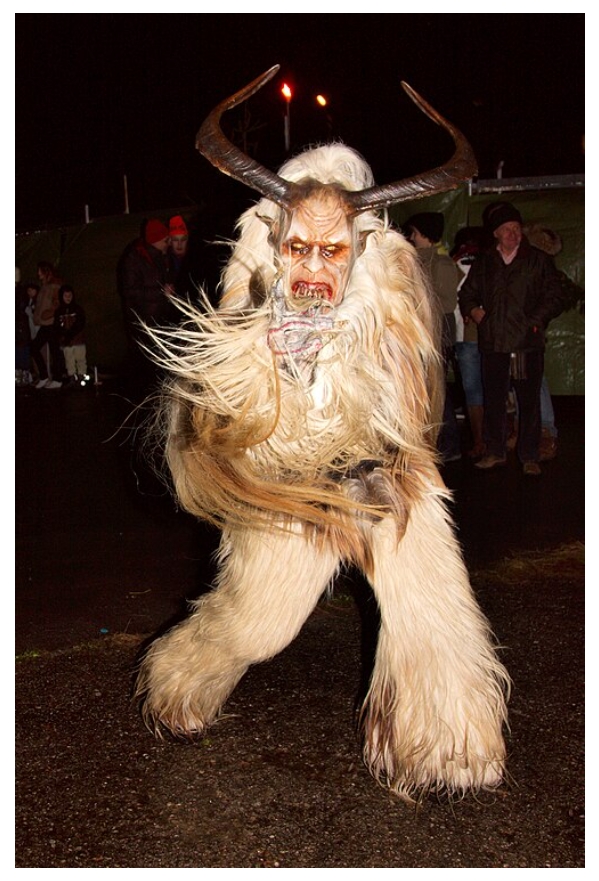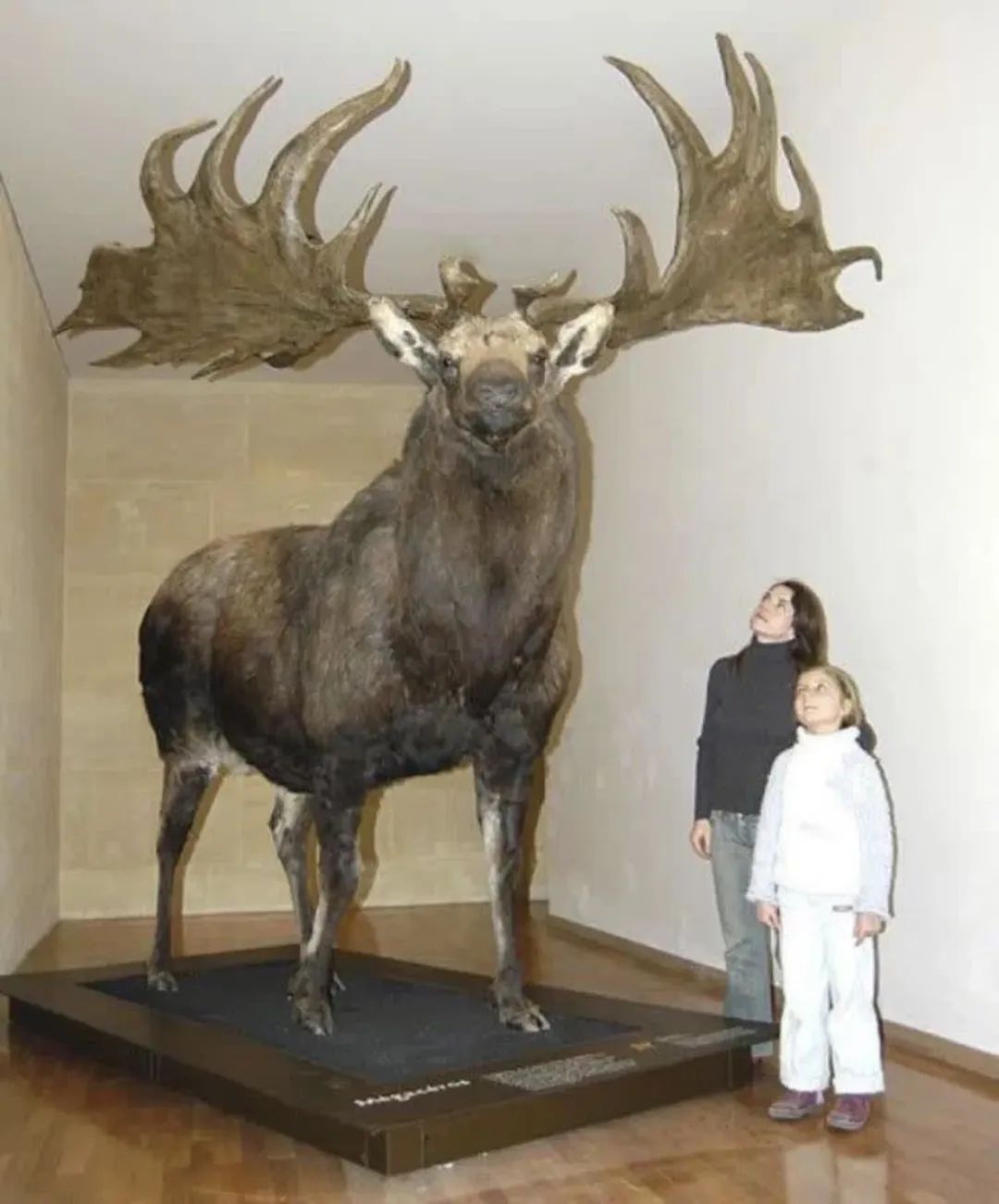
The Feast of St. Nicholas is celebrated in parts of Europe on 6 December. On the preceding evening of 5 December, Krampus Night or Krampusnacht, the wicked hairy devil appears on the streets. Sometimes accompanying St. Nicholas and sometimes on his own, Krampus visits homes and businesses.
The Krampus (German: [ˈkʁampʊs]) is a horned anthropomorphic figure who, in the Central and Eastern Alpine folkloric tradition, is said to accompany Saint Nicholas on visits to children during the night of 5 December (Krampusnacht; “Krampus Night”), immediately before the Feast of St. Nicholas on 6 December.
In this tradition, Saint Nicholas rewards well-behaved children with small gifts, while Krampus punishes badly behaved ones with birch rods.
The origin of the figure is unclear; some folklorists and anthropologists have postulated that it may have pre-Christian origins

In traditional parades and in such events as the Krampuslauf (“Krampus run”), young men dressed as Krampus attempt to scare the audience with their antics. Krampus is featured on holiday greeting cards called Krampuskarten.
The way Krampus is portrayed has changed drastically over the course of the past century. The earliest depictions of him come from the late nineteenth and early twentieth centuries and they look quite a bit different from depictions today.
In all of the late nineteenth and early twentieth-century depictions of Krampus, there are eight features that stand out in nearly every depiction:
Krampus has an insanely long tongue, which dangles out of his mouth, lolling about uncontrollably.
He has long, pointed horns extending from his forehead.
He has long claws.
He has cloven hooves.
He is usually completely black, except for his tongue, which is red.
He has a long tail.
He is bound with chains.
He carries either a bundle of birch sticks or a birch rod for beating naughty children.
The similarities between Krampus and the medieval portrayal of the Abrahamic character called Satan are striking and obvious, but this comparison gets even stronger. Not only are the medieval Satan and the modern-day Krampus virtually identical in appearance, they are also portrayed as very similar in terms of their behavior.
Today we are accustomed to thinking of Satan as a nearly all-powerful figure who tempts people into sin.
In the Middle Ages, though, Satan was often portrayed in mystery plays as a hopelessly incompetent villain who provided comic relief and who always ended up getting chained up and thrown into Hell.










Leave a Reply